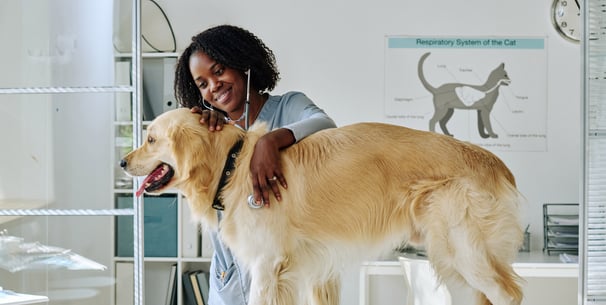Index:



Can dogs eat lettuce? Discover if it's safe for your dog!
As a dog owner, you may wonder if sharing your salad with your furry friend is a good idea. Can dogs eat lettuce safely?
While dogs are primarily carnivores, many pet parents are exploring plant-based additions to their diets.
Lettuce seems like a harmless option, but is it truly safe and beneficial for your canine companion?
Let's dive into the leafy world of lettuce and uncover whether it's a green light or a potential hazard for your pup.
Is lettuce safe for dogs to eat?
Yes, lettuce is safe for dogs to eat in moderation. This crunchy, leafy green vegetable is non-toxic and can be a healthy addition to your dog's diet when prepared properly.
However, as with any new food, it's essential to introduce lettuce gradually and observe your dog for any adverse reactions.



Types of lettuce dogs can eat
There are several types of lettuce that are safe for canine consumption:
Romaine lettuce
Iceberg lettuce
Arugula
Butter lettuce
While all these varieties are safe, some offer more nutritional benefits than others. For instance, romaine lettuce is more nutrient-dense compared to iceberg lettuce.



Benefits of lettuce for dogs
Lettuce can provide several health benefits for your furry friend:
Low in calories: Ideal for overweight dogs or those on a calorie-restricted diet
High water content: Helps with hydration
Rich in fibre: Aids digestion
Contains vitamins A, C, and K: Supports overall health
How much lettuce can a dog eat?
While lettuce is safe, it should not replace your dog's regular meals. Only Feed your dog lettuce as an occasional treat. Following the 90/10 rule is generally a good idea, but every dog is different.
This means that 90% of their diet should consist of balanced dog food, while treats (including lettuce) should make up no more than 10%.
Potential risks of feeding lettuce to dogs
While generally safe, there are some considerations when giving your dog lettuce:
Choking hazard: Cut lettuce into small pieces, especially for smaller dogs
Digestive issues: Too much lettuce can cause diarrhoea or gas
Pesticides: Always wash lettuce thoroughly to remove potential pesticide residues
Salad dressings: Avoid giving your dog lettuce with dressings, as they may contain harmful ingredients or high levels of sugar and salt



How to safely feed your dog lettuce
To ensure your dog enjoys lettuce safely:
Wash the lettuce thoroughly
Cut it into small, manageable pieces
Introduce it gradually to avoid digestive upset
Serve plain, without any dressings or seasonings
Monitor your dog for any adverse reactions
Other safe vegetables for dogs
If your dog enjoys lettuce, you might consider offering other safe vegetables as well. Some options include:
Carrots
Green beans
Cucumber
Pumpkin
Sweet potato
Remember to introduce any new food for your dog slowly and in moderation.
When to consult a veterinarian
While lettuce is generally safe, it's always best to consult your veterinarian before making significant changes to your dog's diet. This is especially important if your dog has existing health conditions or dietary restrictions.
If you notice any of the following symptoms after feeding your dog lettuce, contact your vet immediately:
Vomiting
Persistent diarrhoea
Loss of appetite
Lethargy
Abdominal pain



Conclusion
In conclusion, lettuce is safe for dogs when fed in moderation and prepared properly. It can be a low-calorie, hydrating snack that adds variety to your dog's diet.
However, it should never replace a balanced diet formulated specifically for dogs.
Remember to introduce any new food for your dog slowly and in moderation. For more information on safe foods for dogs, check out our guides on can dogs eat tomatoes and can dogs eat cucumbers.
If you're considering adding lettuce or any other new food to your dog's diet, it's always best to consult with your veterinarian first.
By following these guidelines, you can safely share this crunchy green treat with your canine companion, contributing to their overall health and happiness.
For more information on safe foods for your dog, check out our comprehensive guides on dog nutrition.
Waggel Pet Insurance
Need more help? You're in luck if you're a Waggel Pet Insurance member. Along with our excellent coverage, we offer access to a 24/7 online vet to answer all your sticky questions, especially if you need grooming assistance.
Not a member? Why not get a quote now and cover your furry friend for a range of illnesses, all while enjoying our amazing perks and rewards.
Want more like this?
Get updates from us with helpful info, advice, answers to frequently asked questions and much more.
Index:
- Can dogs eat lettuce? Discover if it's safe for your dog!
- Is lettuce safe for dogs to eat?
- Types of lettuce dogs can eat
- Benefits of lettuce for dogs
- How much lettuce can a dog eat?
- Potential risks of feeding lettuce to dogs
- How to safely feed your dog lettuce
- Other safe vegetables for dogs
- When to consult a veterinarian
- Conclusion
Related posts:
Get your quote
Along with our excellent coverage, we offer access to a 24/7 online vet to answer all your sticky questions.





